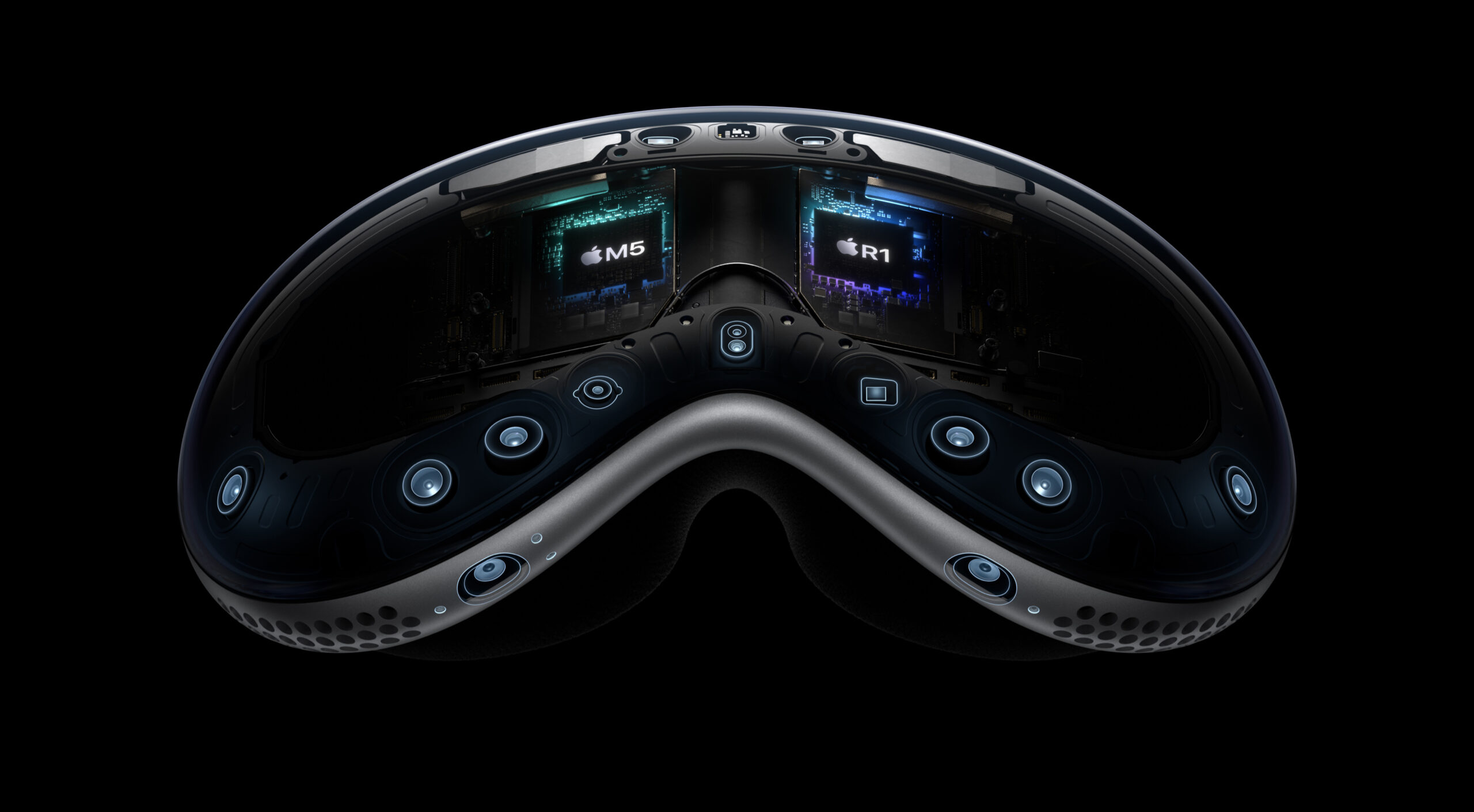Apple’s Vision Pro was already a technological marvel when it launched. With its ultra-high-resolution displays, spatial audio, and seamless integration into Apple’s ecosystem, it set a new benchmark for mixed reality. But in 2025, Apple chose not to rest on its laurels. The updated Vision Pro, now powered by the M5 chip, refines the experience in meaningful ways especially for the professionals and developers who rely on it most.
A Subtle but Significant Upgrade
At first glance, the 2025 Vision Pro doesn’t scream “new.” The design remains familiar, and the core experience is still rooted in spatial computing. But the changes Apple has made are thoughtful and impactful.
The most immediately noticeable improvement is the new Dual Knit Band. Comfort has long been a sticking point for head-mounted devices, and Apple’s solution here is elegant. The new band distributes weight more evenly, reduces pressure points, and makes long sessions far more tolerable. It’s a small change that dramatically improves usability for users who wear the headset for hours at a time.
M5: Power, Efficiency, and AI Muscle
The real story, however, is the M5 chip. Apple’s latest silicon brings a substantial performance boost, with improvements in both speed and battery life. Apps launch faster, multitasking feels smoother, and the headset runs cooler under load. These enhancements alone would justify the upgrade for many users.
But what sets the M5 apart is its new AI cores, integrated directly into the GPU. This architectural shift allows developers to move AI workloads from the cloud to the device, enabling faster, more responsive experiences. For spatial computing, where latency can break immersion, this is a critical advancement.
It also future-proofs the Vision Pro. While the device was already ahead of the competition in terms of hardware, the M5 ensures it stays that way. Developers now have the tools to build richer, more intelligent applications that can run natively without relying on external servers.
A Device Built for Work, Not Just Play
Despite Apple’s consumer-facing marketing, the Vision Pro remains a business-first product. Enterprises use it for training, collaboration, and design. Developers use it to prototype and deploy spatial apps. These users care deeply about performance, and even small improvements can have outsized impacts on productivity.
The M5’s inclusion across Apple’s ecosystem—on the latest iPad Pro and MacBook Pro—further streamlines development. Teams can build and test across devices with consistent performance, making it easier to create seamless cross-platform experiences.
Still Ahead, But Not Untouchable
Apple’s decision to push forward with the Vision Pro is strategic and helps the company stay relevant in this fast changing market. The mixed reality space is heating up, with competitors like Meta, Samsung, and others ramping up their efforts. Apple entered this market later than usual, and while it hasn’t dominated in terms of volume, it has set the standard for quality.
The 2025 update helps Apple maintain that lead. By improving comfort, boosting performance, and enabling on-device AI, the Vision Pro becomes even more compelling for its core audience.
Where Apple Still Needs to Improve
That said, there’s room for growth. Sharing the device remains cumbersome. Handing the headset to someone else still requires an iPhone or iPad to set up a new profile, rather than a simple handoff. This limits its flexibility in collaborative or demo settings.
Siri also continues to lag. In a world where AI assistants are becoming more conversational and context-aware, Apple’s voice interface feels dated. With competitors integrating advanced AI into their headsets, Apple needs to accelerate its efforts here to stay competitive.
Final Thoughts
The 2025 Vision Pro is less of a radical reinvention and more thoughtful refinement. Apple didn’t need to push the tech forward, but it did. And in doing so, it’s made the device more comfortable, more powerful, and more developer-friendly.
For businesses and developers, these changes matter. The M5 chip unlocks new possibilities, the Dual Knit Band improves day-to-day usability, and the continued focus on performance ensures the Vision Pro remains a leader in spatial computing.
Apple may not dominate this market in terms of volume, but with the Vision Pro, it continues to define what premium mixed reality should look like.
